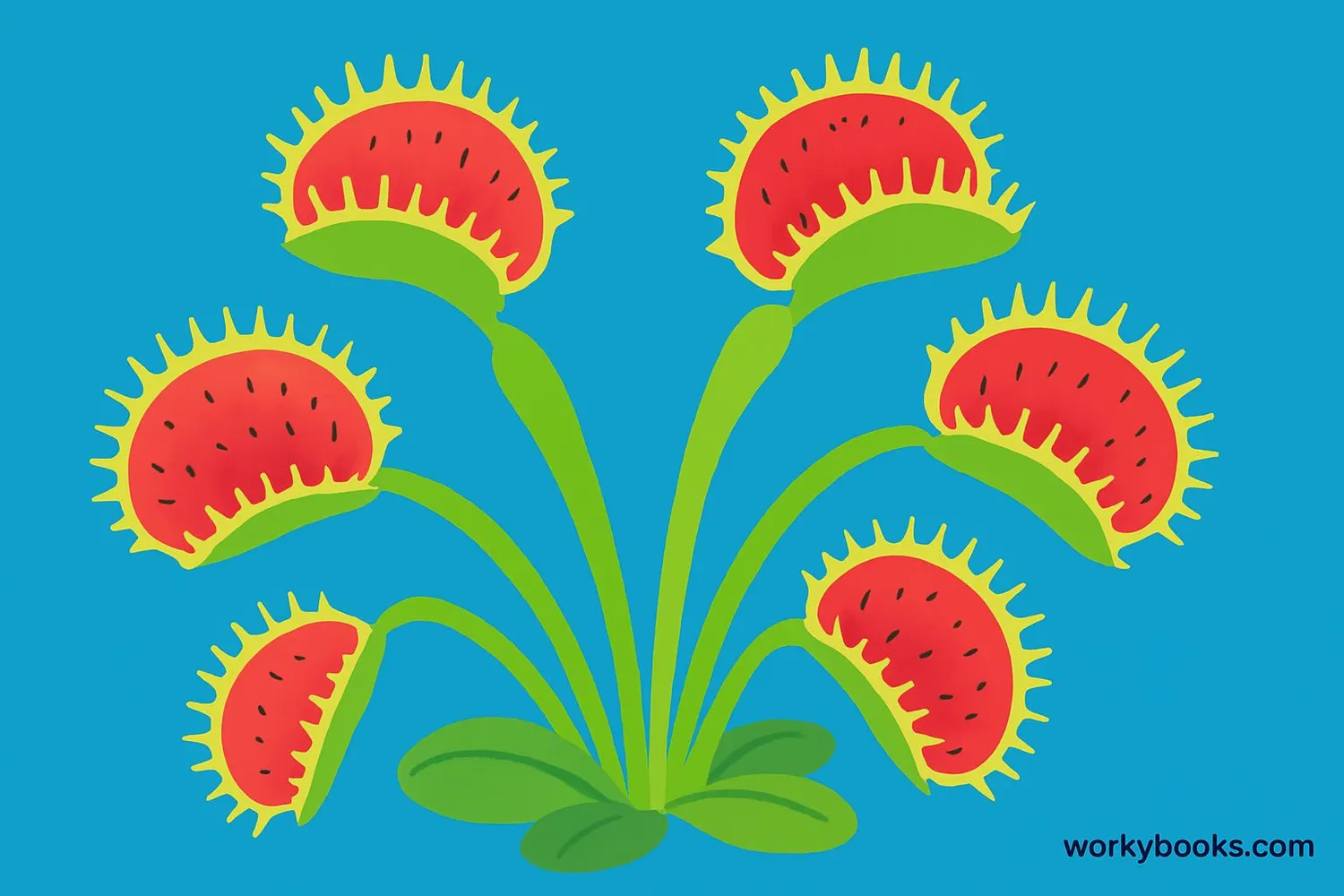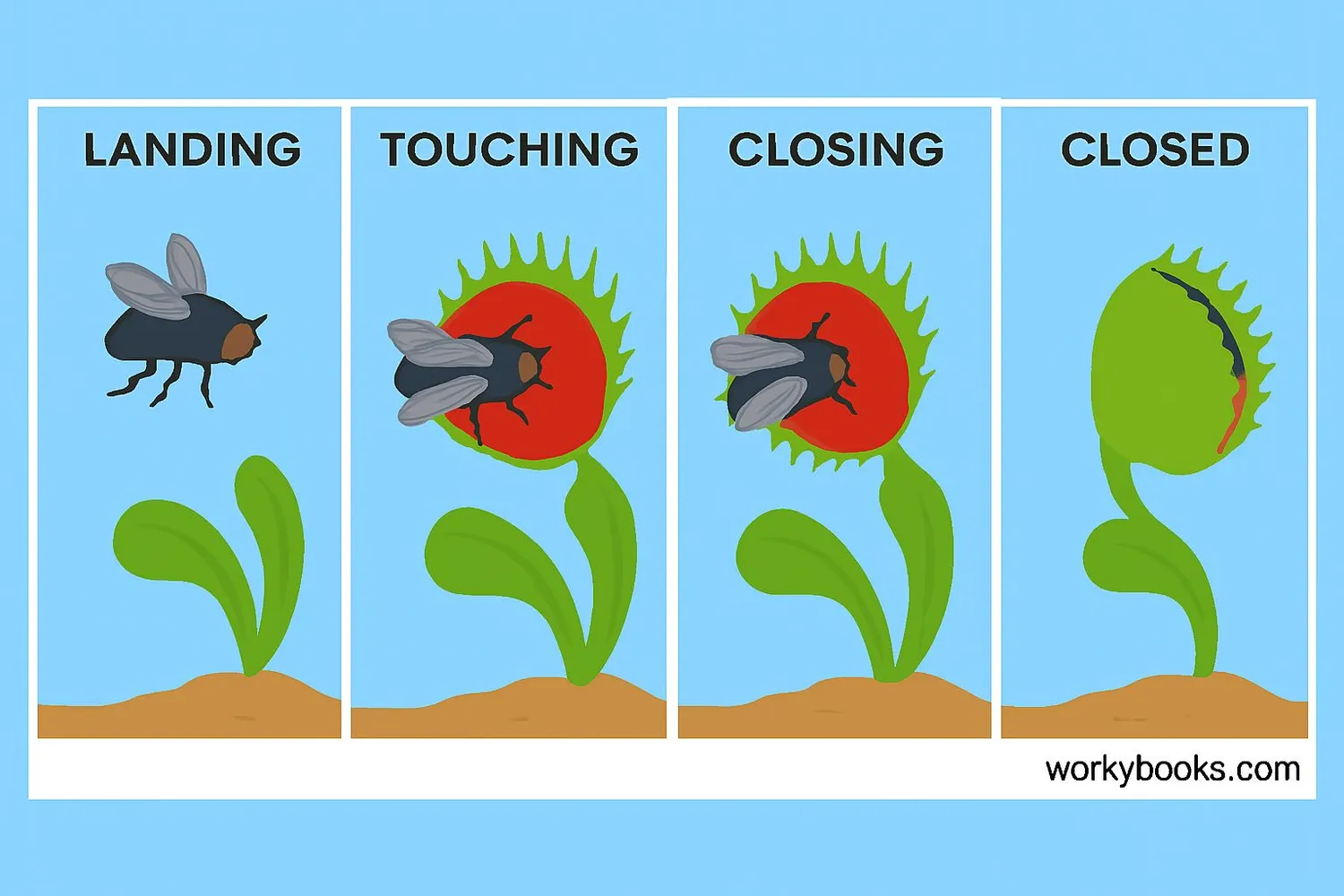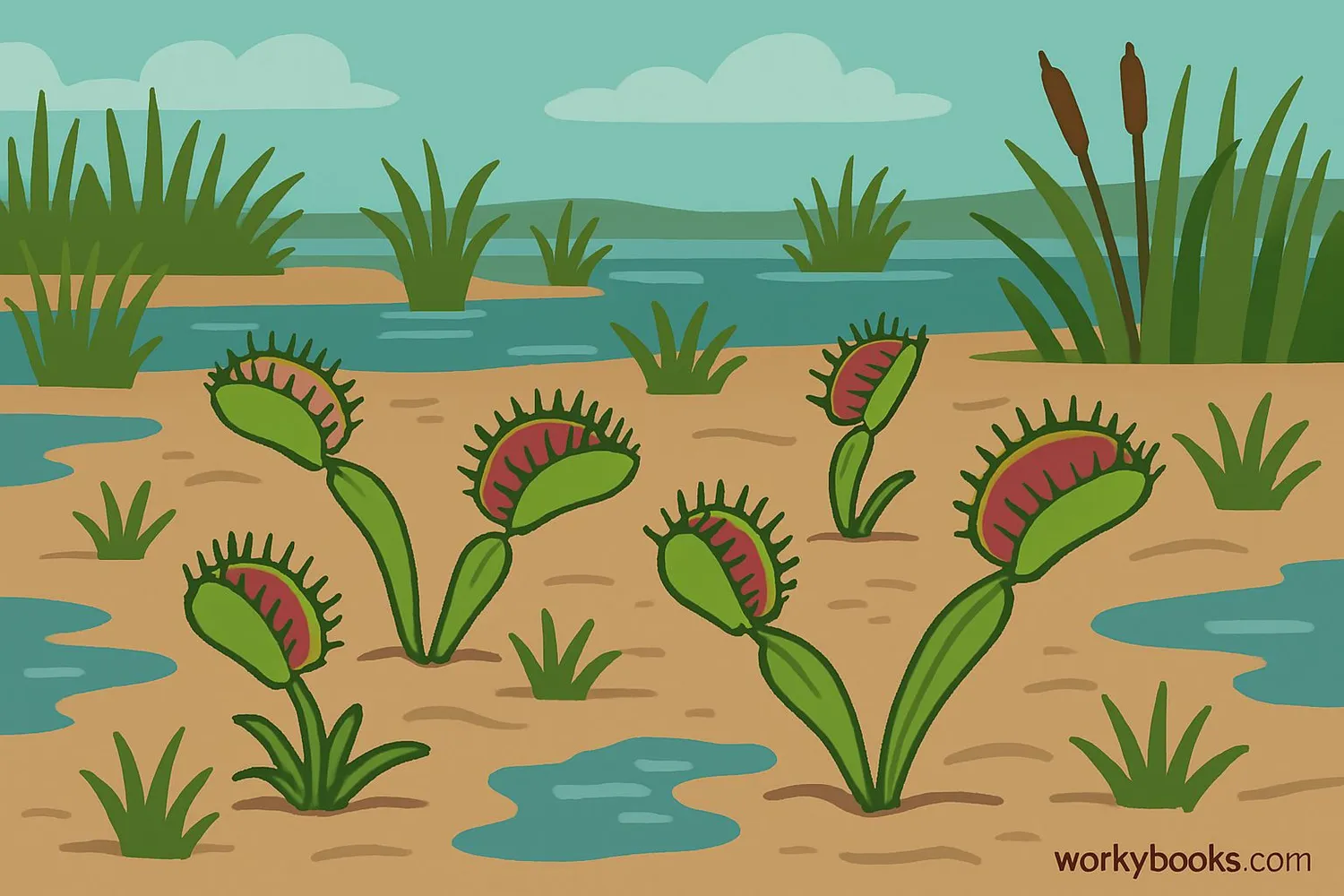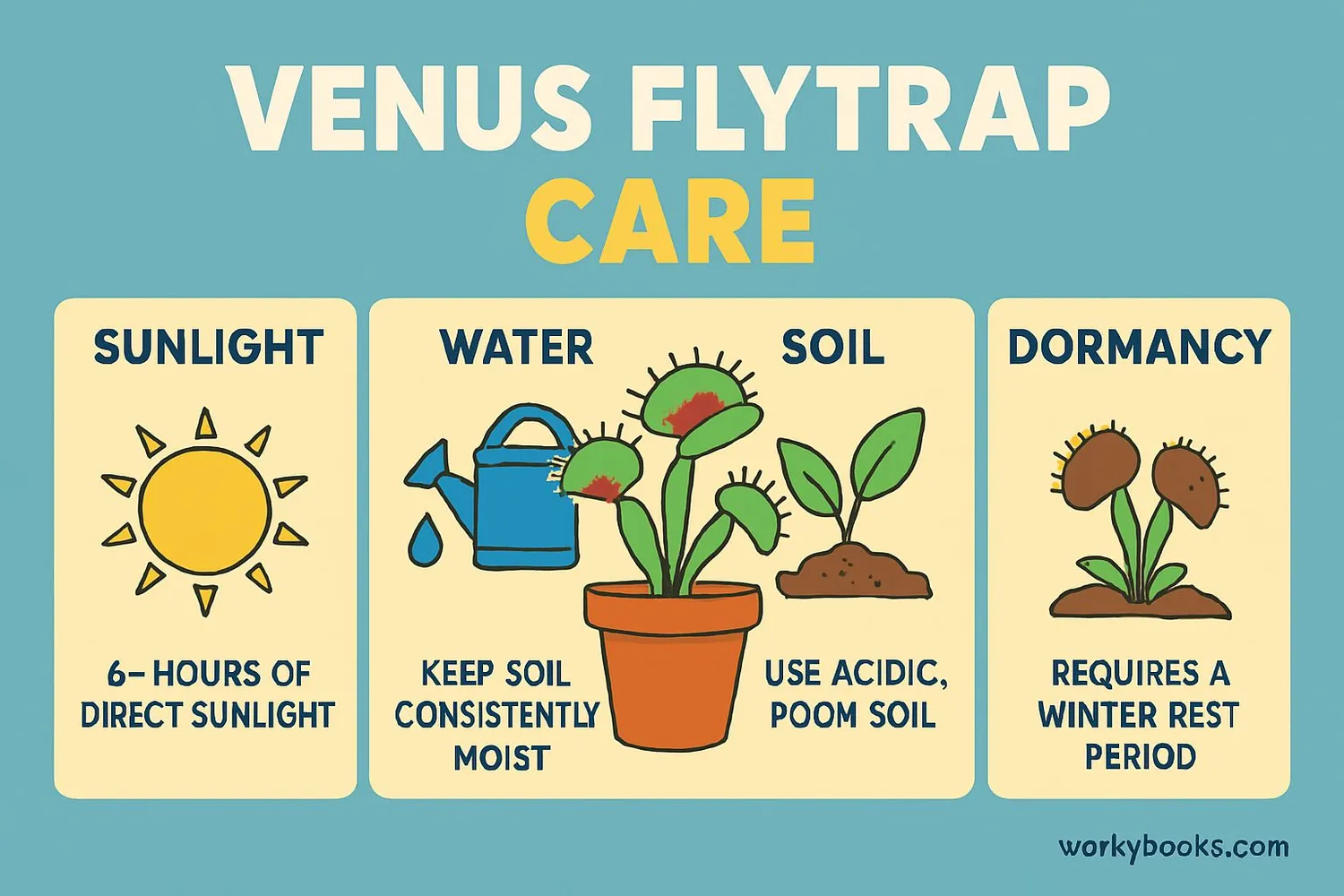Venus Flytrap - Definition, Examples, Quiz, FAQ, Trivia
Discover how these amazing carnivorous plants capture insects and grow in the wild
What is a Venus Flytrap?

The Venus Flytrap (scientific name: Dionaea muscipula) is a fascinating carnivorous plant that catches and digests insects! Unlike most plants that get nutrients from soil, Venus Flytraps grow in poor soil and get extra nutrients by trapping bugs.
These special plants have unique leaves that form traps. Each trap has tiny trigger hairs inside. When an insect touches these hairs, the trap snaps shut in less than a second! The plant then releases digestive juices to break down the insect.
Plant Fact!
Venus Flytraps are native only to a small area in North and South Carolina in the United States.
How It Catches Food

The Venus Flytrap's trapping mechanism is one of nature's most amazing designs! Here's how it works:
Attraction
The trap produces nectar that attracts insects
Trigger
Insect touches trigger hairs inside the trap
Closing
Trap snaps shut in less than 1 second
Sealing
Trap seals tightly to prevent escape
Digestion
Plant releases enzymes to digest the insect
The plant is smart enough to tell the difference between prey and things like raindrops! It requires two touches to the trigger hairs within about 20 seconds before it will close completely. This prevents it from wasting energy on false alarms.
Counting Plant!
Venus Flytraps can "count"! They require multiple touches to trigger hairs before closing completely.
Natural Habitat

Venus Flytraps have very specific natural habitat requirements:
Location
Only found within 100 miles of Wilmington, North Carolina
Climate
Warm, humid summers and cool winters
Soil
Sandy, nutrient-poor, acidic soil that stays moist
In the wild, Venus Flytraps grow in sunny, open areas called "savannas" or "pine flatwoods" with wet, sandy soil. These areas have frequent natural fires that help the plants by clearing away taller vegetation that would block their sunlight.
Unfortunately, Venus Flytraps are considered vulnerable in the wild due to habitat loss and poaching. It's important to protect their natural habitats!
Venus Flytrap Care

If you're growing Venus Flytraps at home, here are important care tips:
Sunlight
Needs at least 4-6 hours of direct sunlight daily
Water
Use rainwater, distilled water, or reverse osmosis water only
Soil
Nutrient-poor mix: 50% sphagnum moss, 50% perlite or sand
Dormancy
Requires 3-4 months of cold winter rest (35-50°F)
Important care reminders:
• Never use tap water - minerals will kill the plant
• Don't feed your plant hamburger or human food - only insects
• Avoid triggering traps for fun - each trap can only open and close 4-6 times before dying
• During winter dormancy, plants may look dead but are resting
With proper care, Venus Flytraps can live for 20 years or more!
Venus Flytrap Quiz
Test your Venus Flytrap knowledge with this fun quiz! Answer all 5 questions to see how much you've learned.
Frequently Asked Questions
Here are answers to common questions about Venus Flytraps:
Fascinating Venus Flytrap Facts
Discover some amazing facts about Venus Flytraps!
Electro-Sensitive
Venus Flytraps can detect electrical signals from insects! When an insect touches the trigger hairs, it creates a tiny electrical charge that signals the trap to close.
Size Matters
A typical trap is about 1 inch (2.5 cm) long. The largest recorded trap measured 2.4 inches (6.1 cm) across - big enough to catch small frogs!
Medicinal Value
Scientists are studying Venus Flytrap extracts for potential medical uses, including cancer treatment and wound healing. The plant contains unique compounds not found in other species.
Endangered Species
Venus Flytraps are considered a vulnerable species in the wild. Habitat destruction and illegal collection have reduced their natural populations significantly. Always buy cultivated plants from reputable sources.


